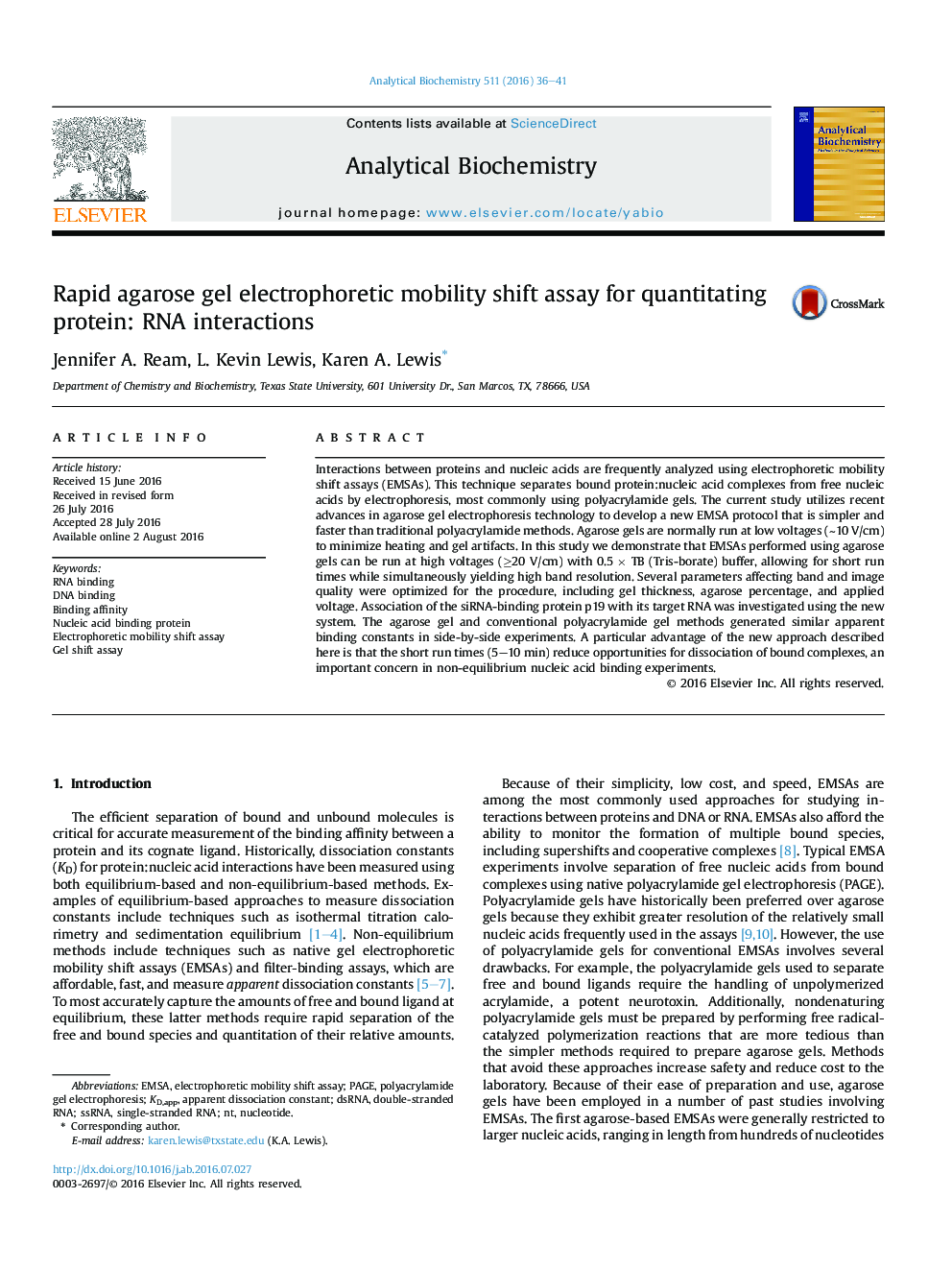| Article ID | Journal | Published Year | Pages | File Type |
|---|---|---|---|---|
| 1175166 | Analytical Biochemistry | 2016 | 6 Pages |
Interactions between proteins and nucleic acids are frequently analyzed using electrophoretic mobility shift assays (EMSAs). This technique separates bound protein:nucleic acid complexes from free nucleic acids by electrophoresis, most commonly using polyacrylamide gels. The current study utilizes recent advances in agarose gel electrophoresis technology to develop a new EMSA protocol that is simpler and faster than traditional polyacrylamide methods. Agarose gels are normally run at low voltages (∼10 V/cm) to minimize heating and gel artifacts. In this study we demonstrate that EMSAs performed using agarose gels can be run at high voltages (≥20 V/cm) with 0.5 × TB (Tris-borate) buffer, allowing for short run times while simultaneously yielding high band resolution. Several parameters affecting band and image quality were optimized for the procedure, including gel thickness, agarose percentage, and applied voltage. Association of the siRNA-binding protein p19 with its target RNA was investigated using the new system. The agarose gel and conventional polyacrylamide gel methods generated similar apparent binding constants in side-by-side experiments. A particular advantage of the new approach described here is that the short run times (5–10 min) reduce opportunities for dissociation of bound complexes, an important concern in non-equilibrium nucleic acid binding experiments.
